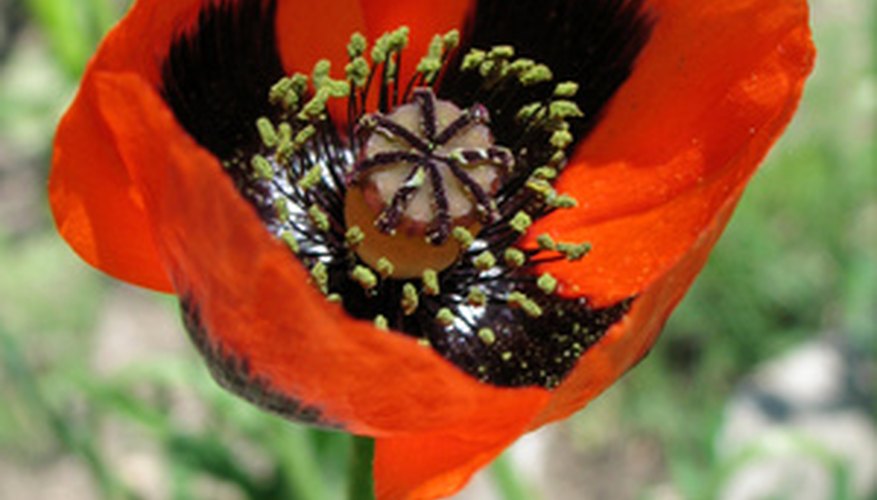Heroine, morphine, opium, codeine and poppy-seed bagels--the poppy is used for them all. Part of the scientific family Papaveraseae, the opium poppy is famous for felling Dorothy and her comrades in the Wizard of Oz. Other members of the poppy family--more than 100 of them--are known more as prolific wildflowers growing in vast fields in sunny terrain.
Identification
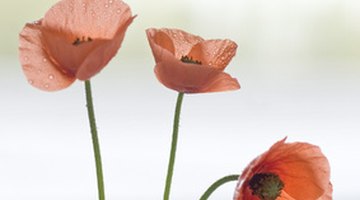
The common poppy is an erect flower, growing up to 3 feet tall. It has few leaves, usually blue-green leaning toward grey, which die as the plant matures. The stems are long and, in some species, covered with hairs. The flowers have bright petals, usually scarlet, orange or red, frequently spotted with black at the base.
- The common poppy is an erect flower, growing up to 3 feet tall.
- The stems are long and, in some species, covered with hairs.
Habitat

The poppy family is indigenous to the northern hemisphere, although it has been cultivated worldwide in temperate climates. Poppies can thrive in many types of soil, as long as it is well-drained. They prefer open, arable fields and sun.
Seed production
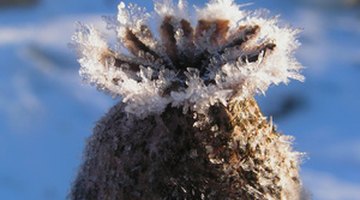
Most poppy varieties are annual plants, which means that they complete their life cycle from germination to death within one year. They germinate from seeds and, like other annuals, rely on seed production to maintain their populations. The poppy produces large numbers of seed--around 16,500 per plant--and the seeds can live dormant for a long period of time.
Reproduction
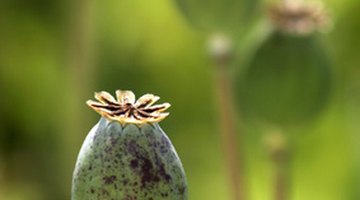
When the seeds are exposed to light, they germinate. Poppy seeds germinate in the spring, generally producing flowers by July, although some species yield flowers earlier. As the plant grows, its ovary fills with seeds which are released through valves or pours on the top of the fruit.
Population in Decline
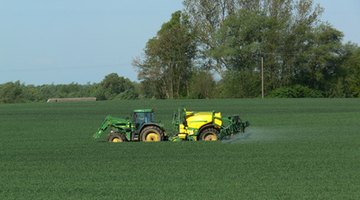
Pesticides have taken their toll on the poppy, as on other wildflowers. They are particularly sensitive to toxins but have survived where other plants have not due to the longevity of their seeds.
